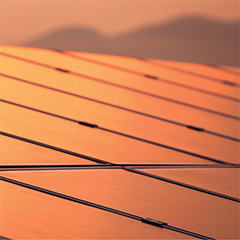Ireland’s first competitive auction for renewable energy capacity took place this summer. The results spell sunny times ahead for the nascent solar industry in Ireland and mark an important step towards the country’s target to meet 70% of its electricity supply from renewables by 2030.
Auction results
According to provisional results issued by electricity market operator EirGrid, 63 solar farms totaling 796 MW and 19 wind farms totaling 479 MW were successful in the RESS-1 auction, with an average bid price of EUR 74.08/MWh.
Figure 1 shows this pricing alongside recent auction results in the wider European market. Unlike most renewables subsidy schemes in Europe, the RESS-1 prices are not index linked, which according to our industry contacts added EUR 10-12/MWh to bid prices. Grid costs in Ireland also tend to be higher than in other European markets.
The move to a competitive auction scheme is good news for the consumer – RESS-1 prices showed a significant step down from the previous REFIT subsidy scheme, which was only available to onshore wind farms at a tariff of EUR 80.25/MWh in 2019.
Technology competition
While a separate auction is expected to take place for offshore wind projects in 2021/2022, RESS-1 marks the first time that onshore wind and solar have gone head to head in the Irish market – and results may be surprising at first glance. Ireland sees among the highest wind speeds in Europe, and generally has a reputation as a cloudy and rainy country (see Figure 2 & 3 for wind and solar resource maps). With no history of large-scale solar deployment in Ireland, developers and investors also faced a steep learning curve around the solar supply chain, contracting strategy, and design optimisation.
The auction was designed with a separate pot ring-fenced for solar projects (up to 300 GWh or approx. 300 MW), with the remaining solar projects competing against wind farms in a general pot. When the auction design was first announced, expectations were that solar farms would struggle to match wind farm bid prices and effectively be limited to the ringfenced pot.
The outcome was solar projects were able to hold their own in the general pot, and secure around 467 GWh additional capacity. This is partially due to some large wind projects opting not to participate in the auction but is also testament to rapidly declining solar Capex and advances in module technology.
UK developers and investors in particular will be taking note of these results, as the upcoming CFD AR4 auction (planned for 2021 in the UK) is expected to have a similar technology-neutral design.



























